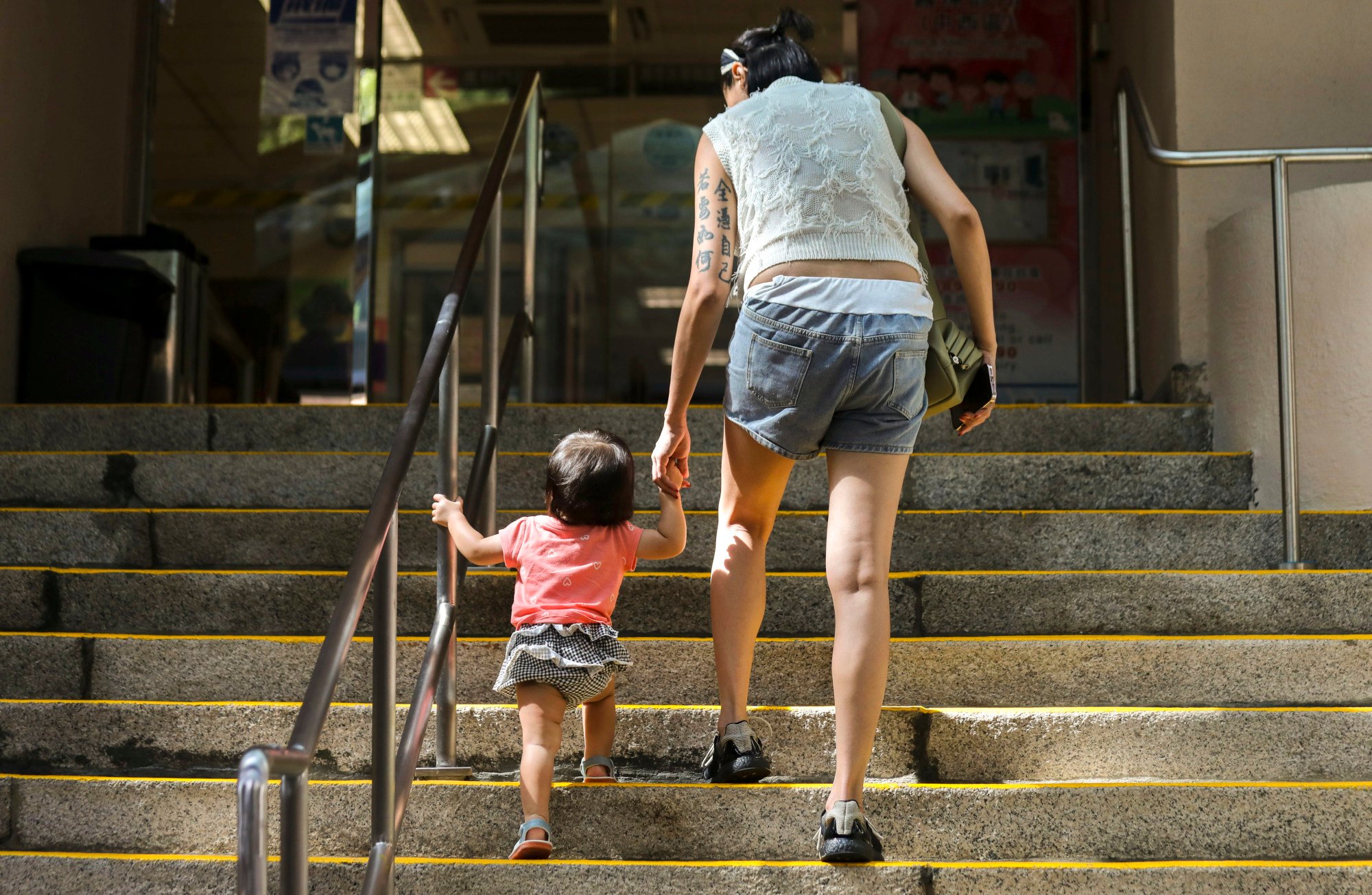
Explainer | What can Hong Kong do to reverse its low birth rate? We look at proposals – from extending sperm and embryo storage to even universal suffrage
- Number of childless couples has doubled in five years, according to Family Planning Association survey
- Proposals raised include allowing organisations to provide arranged surrogacy services and increasing the child allowance
Hong Kong’s struggle with a low birth rate is back in the spotlight after the latest census data suggested the number of babies born between June last year and June this year had continued to drop – at a mere 32,600 from 35,100 in the preceding 12 months.
The government also projected the birth rate to remain low in the coming decades, counting on foreign labour imports and overseas talent recruitment as the main drivers of population.
A latest survey by the Family Planning Association found that the number of childless couples had doubled in five years while the average number of children born per couple also dropped to a record low of 0.9.
Chief Executive John Lee Ka-chiu has promised to consider public suggestions on ways to boost the birth rate.
The Post takes a closer look at proposals raised by political parties and experts:
1. Prolonging storage of eggs, sperm and embryos
New People’s Party chairwoman Regina Ip Lau Suk-yee, also convenor of the key decision-making Executive Council which advises the city’s leader, proposed to lengthen the permitted storage period for eggs, sperm and embryos from 10 to 55 years.

She said she took reference from Britain, and such a plan would offer “more flexibility” for couples to give birth. But reproductive medicine experts in the city described the proposal as “unrealistic and not suitable for Hong Kong”.
Professor Ernest Ng Hung-yu, former head of the division of reproductive medicine at Queen Mary Hospital, said the longer timespan would have little effect because there was no real demand for a storage period of more than 10 years.
He explained that most people who stored reproductive material would use them within four years.
2. Allow organisations to provide arranged surrogacy services
Ip’s party also suggested the government consider allowing local eligible organisations to provide surrogacy services to couples in need.
Hong Kong’s Human Reproductive Technology Ordinance prohibits commercial surrogacy and forbids couples to use donated eggs or those of surrogates.
There are at present 12 public and 24 private healthcare institutions licensed to offer reproductive services. But none of them are allowed to provide surrogacy arrangements.

Ip said laws in the city covering the use of reproductive technology were very restrictive, hence preventing many women who are not physically able to receive in vitro fertilisation treatment from having their babies.
While admitting that allowing commercial surrogacy would give rise to ethical problems, Ip argued it was practical to review the current restriction and allow couples to turn to surrogate mothers using eggs and sperm not necessarily their own.
3. More child allowance
The Liberal Party proposed introducing a progressive child allowance mechanism to encourage parents to give birth.
With the current tax allowance per child standing at HK$130,000 (US$16,600), the proposed mechanism suggested the amount for a firstborn to be HK$150,000, doubled for a second child and up to HK$600,000 for a third.
4. Extend maternity leave
The Federation of Trade Unions, the city’s largest labour union, proposed extending maternity leave from the current 14 weeks to 16 weeks.
It also suggested extra days of maternity leave could be given to mothers who gave birth to more than one child. For example, an additional 15 days of leave could be granted for each additional baby born.

For those who experienced difficult labour or needed caesarean sections, an extra 15 days of maternity leave should also be added to allow women more time to recover, it said.
The union also suggested that women aged between 24 and 29 could receive an additional 60 days of maternity leave to motivate residents to give birth earlier.
5. Implement universal suffrage
Hong Kong’s only centrist lawmaker Tik Chi-yuen and his Third Side Party took a very different approach to addressing the population crisis.
He argued that without a democratic system, young people lacked confidence in the future of society. They would then be unwilling to bring perceived hardship onto the next generation, he argued.
Tik’s party called on the chief executive to implement universal suffrage based on the dubbed “831 [August 31] framework”, which would allow all residents to cast votes based on a pool of candidates screened by the central government, instead of the current closed-circle balloting.
6. More affordable housing
University of Hong Kong population health expert Professor Paul Yip Siu-fai noted that all of the proposals raised so far would have minimal impact.
He argued that women would only be encouraged to marry and give birth early if there was support for housing, finance and education.
For housing, he suggested the government craft subsidised housing specifically for young married couples, promising them conditions conducive for having children. According to Yip, the administration could also consider monthly cash allowances for couples who gave birth, until their children reach a certain age.

